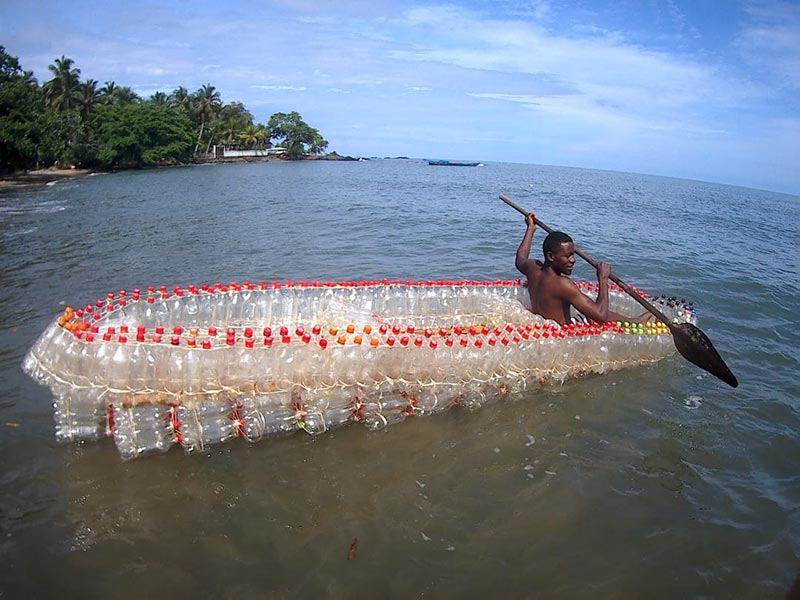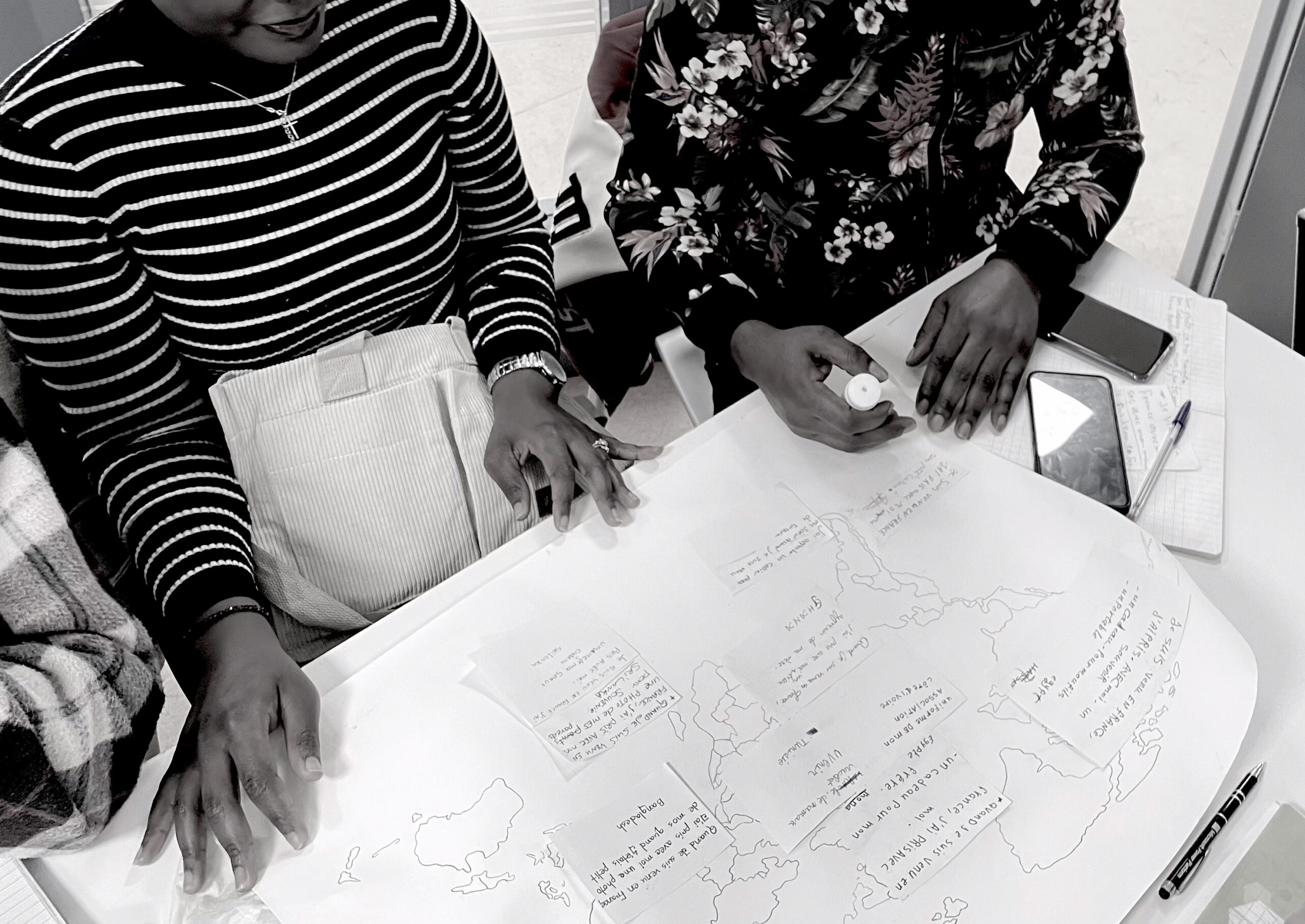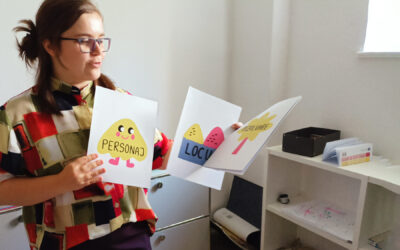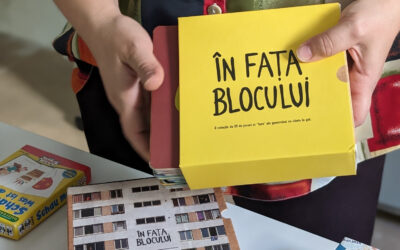Travel Game
Travel Game
A memory and creativity-boosting game where players take turns adding items to a travel list. The first player starts by saying, “I am going on a trip and I will take…” and names an item. Each player must remember the previous items before adding their own. The game continues until a player forgets an item, making it a fun way to practice memory and sequencing!
Time
4 – 14 years old children
4 – 14 years old children
2 -10 Participants
Language skills
Memory & Recall, Sentence Building, Logical Thinking, Speaking & Pronunciation, Listening Skills
Other skills
Social Interaction, Creative Thinking – Finding new, relevant words requires imagination
Levels
From A1 to B1
None, optionally drawing paper, pens and pencils

Languages Available
Step 1: Introduce the Game
- Gather the players and explain the rules of the game.
- Tell them they will be going on a trip (e.g., a camping trip) and must list items they will take with them.
- Each player must remember and repeat all previous items before adding their own.
Step 2: Start the Game
- The first player begins by saying:
- “I am going on a trip to the campsite, and I will take… (e.g., a cup).”
- The second player repeats the previous sentence and adds another item:
- “I am going on a trip to the campsite, and I will take a cup and a plate.”
- The third player does the same while adding a new item:
- “I am going on a trip to the campsite, and I will take a cup, a plate, and a spoon.”
Step 3: Continue the Sequence
- Each player must recall and repeat all previous items in the correct order before adding a new one.
- If a player forgets an item or cannot recall the sequence correctly, they are out of the round or may receive assistance depending on the group’s level.
Step 4: Encourage Creativity
- Encourage players to be creative with the items they take on the trip. They can choose realistic or even imaginative items, depending on their age and language level.
- Examples of possible items:
- A fork, a knife, a pillow, a blanket, a rope, a thread, a camera, a night lamp, a bandage…
Step 5: Ending the Game
-
- The game continues until a player cannot add a new item or makes an error in repeating the list.
- The last player remaining who can correctly recall and add an item is the winner.
- If playing in a non-competitive way, the game can end when all players have had multiple turns and the list becomes too long to remember.
6. Integrate visual creation in the exercice. You can for instance:
a)”Draw Your Travel Bag”
- As students add an item to the list, they must draw the object in their “travel bag” on a piece of paper.
- At the end of the game, each student will have a visual representation of all the things they are taking on their journey.
- Encourage students to label their drawings with the object’s name in the target language.
Language Focus:
- Vocabulary building (object names, adjectives, colors)
- Writing practice (labeling and describing objects)
b)“Create a Travel Poster”
- After playing the game, ask students to make a travel poster about their trip.
- They can include drawings of their selected items, a background scene (e.g., a campsite, desert, or space), and a short paragraph about their adventure.
- Encourage them to use full sentences in the target language to describe what they packed and why.
Language Focus:
-
-
- Sentence structure (e.g., “I am taking a flashlight because it helps me see at night.”)
- Writing fluency and storytelling
-
c) “Guess the Item” Drawing Challenge
- Instead of saying the item out loud, the player draws what they are taking on their trip.
- Other players must guess the word in the target language before it is added to the list.
- This variation encourages visual thinking and language recall.
Language Focus:
- Speaking practice (guessing and describing objects)
- Visual vocabulary recognition
d) “Comic Strip Adventure”
- After the game, ask students to turn their travel experience into a short comic strip.
- Each frame should illustrate a part of their journey, with speech bubbles containing sentences in the target language.
- They can describe what they packed, why they need it, and what happens on the trip.
Language Focus:
- Creative storytelling and dialogue writing
- Grammar and sentence construction
Variation for more advanced learners and other age groups :
A2-B1:
- Instead of saying “I will take will take with me…” you can make more complicated sentences using the conditional and possessive adjectives: “If I went on a trip, I would take with me my….”
- Other players must guess the word in the target language before it is added to the list.
- This variation encourages visual thinking and language recall.
B1-C1 (for teenagers, youth and adults):
- You can also use this activity as an introduction to initiate a conversation session about what a “migrating object” is. You can make appeal to the participants own memories, objects that they own and which are important for them
- (articles on traveling, migrating objects: https://marsactu.fr/la-bible-de-seta-un-objet-migrateur-trouve-refuge-a-la-vieille-charite/
- If you work with people with refugee and migratory background, you can focus on objects that they brought with them. Ask them to make photos, show them to each-other.
- For second or third generation migrants, learners can think of an object that they parents or grandparents have or had that they brought with them. You can eventually tell them to ask their families to tell the objects’ stories.
Be aware that the topic might be sensitive for some. Ask in advance if they agree to participate to this advanced version of the exercise.

For Educators & Teachers
Recommendations
- Choose Age-Appropriate Texts
Select engaging and level-appropriate stories that match students’ reading abilities.
Use familiar topics to boost interest and comprehension.
- Adapt to Different Skill Levels
- For beginners: Use shorter passages with simple words and encourage oral sentence formation.
- For advanced learners: Choose longer passages with more complex vocabulary and ask them to write sentences.
- For beginners: Use shorter passages with simple words and encourage oral sentence formation.
- Make It Interactive
- Encourage students to read the passage aloud before starting the activity.
- Let them work in pairs or small groups to find words together.
- Incorporate a Discussion Phase
- After underlining words, ask students to explain their meaning or use them in a new context.
- Encourage questions to ensure comprehension.
- Use a Variety of Texts
- Rotate between fiction, non-fiction, poetry, and informational texts. This helps students develop different reading skills and expand their vocabulary
- Adapt to Language Proficiency Levels
- For beginners, allow students to use visual aids or provide a word bank of possible items.
- For more advanced learners, challenge them to add descriptive details about their items (e.g., “I will take a warm, cozy sleeping bag.”).
- Encourage Active Participation
- Use gestures, facial expressions, or real-life objects to engage younger students.
- Allow students to act out or mime their items to make the game more interactive.
- Use Thematic Variations
-
-
- Change the setting of the trip (e.g., a trip to space, a jungle adventure, a visit to a castle).
- Require students to only choose items that start with a specific letter or belong to a certain category (e.g., food, tools, clothing).
- Provide Scaffolding for Struggling Learners
- Write down the list on the board as students add items to help them follow along.
- Repeat the list together as a class before each new turn to reinforce memory.
-
Challanges
- Memory Limitations
-
- Younger or beginner learners may struggle to remember the full sequence of items, making the game difficult to sustain.
- Some students might lose interest if the list becomes too long or complex.
- Unequal Participation
- More confident or advanced students may dominate the game, while shy or struggling students may hesitate to participate.
- Some students may need extra time to recall items, which can slow down the game.
- Language Barriers
- If the game is played in a second language, some students may not know enough vocabulary to add new items confidently.
- Pronunciation difficulties might make it hard for others to understand repeated words.
- Disruptions and Disengagement
- If the game goes on for too long, students may lose focus or become restless.
- Players who forget an item or make a mistake early on might feel discouraged and disengage.
- Difficulty in Online or Distance Learning
- In virtual settings, lag or connectivity issues can disrupt the flow of the game.
- Without physical interaction, students may find it harder to stay engaged or remember the sequence.
- Managing Large Groups
- With more players, the list of items becomes harder to remember, increasing the chances of mistakes.
- It may be difficult for the teacher to ensure that all students get equal turns
Adaptation/Application of the method
- For Younger Players:
- Use visual aids like flashcards or drawings to help children remember items.
- Limit the number of words they need to recall (e.g., only the last three items).
- For Older Players:
- Add a rule where the items must follow a theme (e.g., only food, only camping gear, only objects starting with the letter “B”).
- Introduce a time limit for recalling the list.
- For More Advanced Language Learners:
- Encourage players to describe the item they add. For example:
- “I am bringing a sleeping bag, which will keep me warm at night.”
- Encourage players to describe the item they add. For example:
- For Online or Distance Learning:
- Play using a video call or messaging app. Each player types or says their sentence in sequence.
- Use digital flashcards or images to assist memory recall.
References and Resources
Arabic Vocabulary Lists by Theme: Desert-Sky provides extensive vocabulary lists organized by themes, including both Modern Standard Arabic and Egyptian Arabic. These lists can be used to introduce new words during the game: https://arabic.desert-sky.net/vocab.html
Madinah Arabic – Vocabulary Section: Madinah Arabic provides commonly used words in both Modern Standard Arabic and Classical Arabic, accompanied by images and audio pronunciations. This can aid in correct pronunciation and retention : https://www.madinaharabic.com/vocabulary
LinGo Play – Arabic Learning App: LinGo Play is an online vocabulary trainer that offers flashcards and phrases through interactive games. It’s effective for learners aiming to expand their Arabic vocabulary in an engaging manner: https://play.google.com/store/apps/details?hl=en_US&id=com.vocabulary.arabic.game
Similar Activities
Ma première histoire
This fun activity for all ages uses storytelling and a simple card game to help children develop language skills, creativity, and self-confidence by reading, identifying story elements, and creating their own stories
My First Story English Only
This fun activity for all ages uses storytelling and a simple card game to help children develop language skills, creativity, and self-confidence by reading, identifying story elements, and creating their own stories


